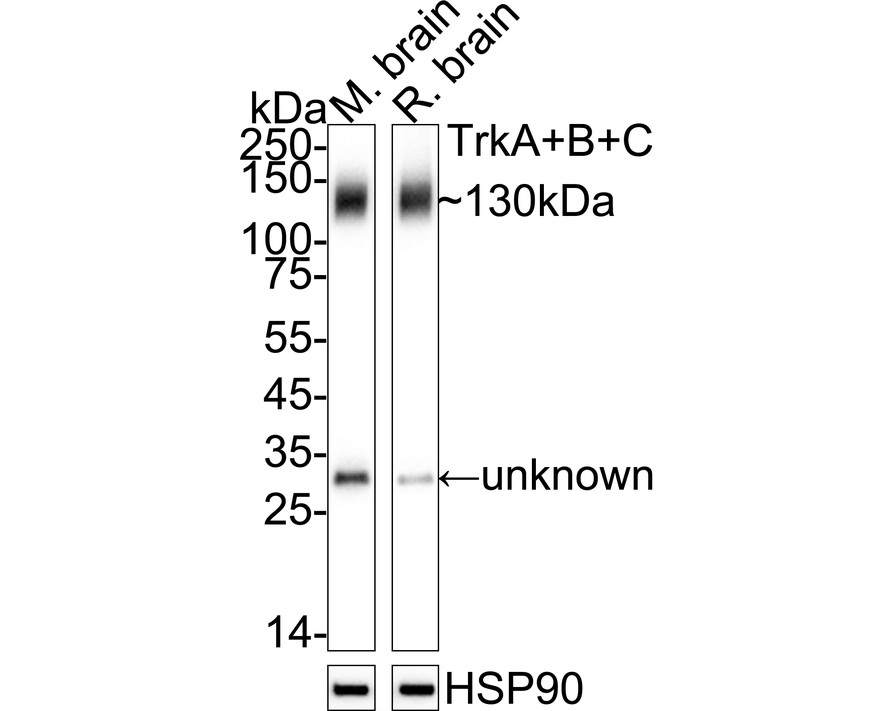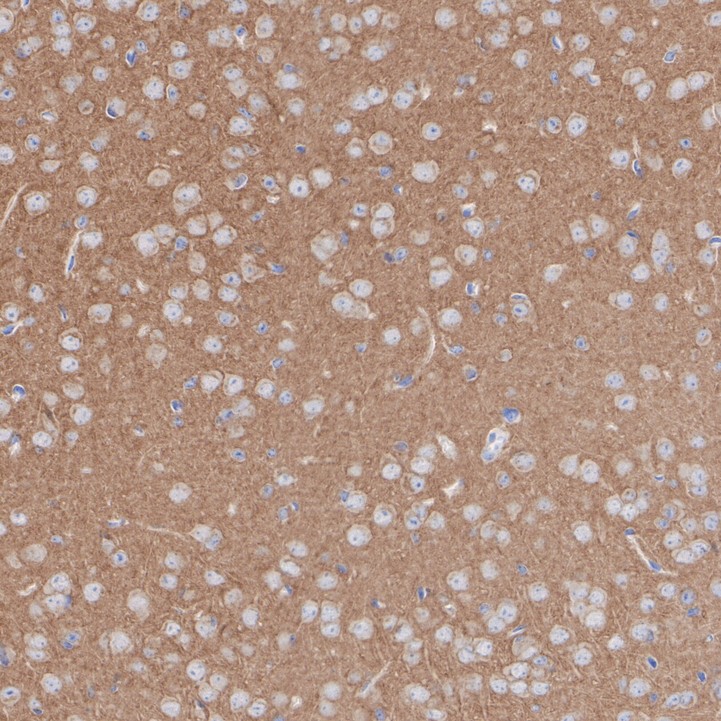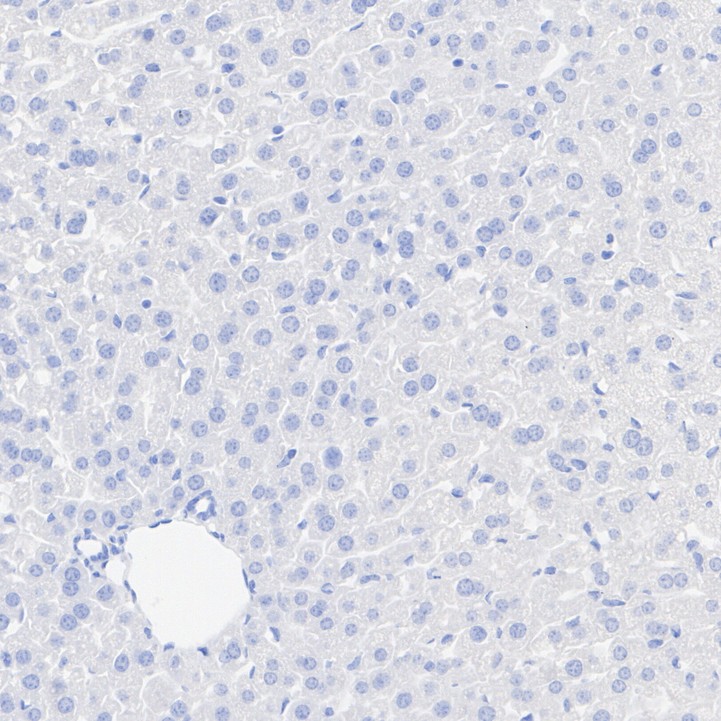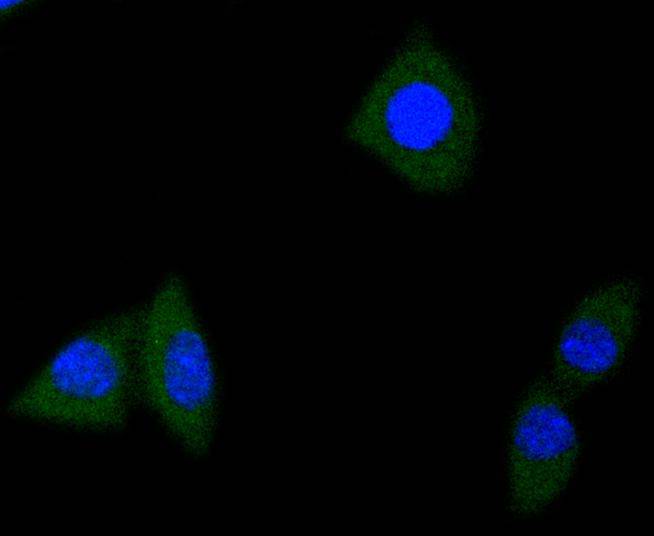TrkA+B+C Recombinant Rabbit Monoclonal Antibody [JJ084-04]

cat.: ET1701-16
| Product Type: | Recombinant Rabbit monoclonal IgG, primary antibodies |
|---|---|
| Species reactivity: | Human, Mouse, Rat |
| Applications: | WB, IF-Cell, IHC-P |
| Clonality: | Monoclonal |
| Clone number: | JJ084-04 |
| Form: | Liquid |
| Storage condition: | Shipped at 4℃. Store at +4℃ short term (1-2 weeks). It is recommended to aliquot into single-use upon delivery. Store at -20℃ long term. |
| Storage buffer: | 1*TBS (pH7.4), 0.05% BSA, 40% Glycerol. Preservative: 0.05% Sodium Azide. |
| Concentration: | 1ug/ul |
| Purification: | Protein A affinity purified. |
| Molecular weight: | Predicted band size: 92 kDa |
| Isotype: | IgG |
| Immunogen: | Synthetic peptide within Human TrkB aa 773-822 / 822. |
| Positive control: | Mouse brain tissue lysate, Rat brain tissue lysate, mouse brain tissue, rat brain tissue, SH-SY-5Y, N2A. |
| Subcellular location: | Membrane, Endosome membrane. |
| Recommended Dilutions:
WB IF-Cell IHC-P |
1:1,000-1:5,000 1:50-1:200 1:200 |
| Uniprot #: | SwissProt: P04629 Human | Q16288 Human | Q16620 Human | Q3UFB7 Mouse | P15209 Mouse | Q6VNS1 Mouse | P35739 Rat | Q63604 Rat | Q03351 Rat |
| Alternative names: | BDNF/NT-3 growth factors receptor gp140trk GP145-TrkB GP145-TrkC High affinity nerve growth factor receptor MTC Neurotrophic tyrosine kinase receptor type 1 Neurotrophic tyrosine kinase receptor type 2 Neurotrophic tyrosine kinase receptor type 3 NT-3 growth factor receptor NTRK1 NTRK2 NTRK3 p140-TrkA TRK Trk-A Trk-B Trk-C TRK1-transforming tyrosine kinase protein TRKA TRKB TrkB tyrosine kinase TRKC TrkC tyrosine kinase Tropomyosin-related kinase A Tropomyosin-related kinase B Tyrosine kinase receptor A Tyrosine kinase receptor |
Images

|
Fig1:
Western blot analysis of TrkA+B+C on different lysates with Rabbit anti-TrkA+B+C antibody (ET1701-16) at 1/1,000 dilution. Lane 1: Mouse brain tissue lysate Lane 2: Rat brain tissue lysate Lysates/proteins at 20 µg/Lane. Predicted band size: 92 kDa Observed band size: 130 kDa Exposure time: 25 seconds; ECL: K1801; 4-20% SDS-PAGE gel. Proteins were transferred to a PVDF membrane and blocked with 5% NFDM/TBST for 1 hour at room temperature. The primary antibody (ET1701-16) at 1/1,000 dilution was used in 5% NFDM/TBST at 4℃ overnight. Goat Anti-Rabbit IgG - HRP Secondary Antibody (HA1001) at 1/50,000 dilution was used for 1 hour at room temperature. |

|
Fig2:
Immunohistochemical analysis of paraffin-embedded mouse brain tissue with Rabbit anti-TrkA+B+C antibody (ET1701-16) at 1/200 dilution. The section was pre-treated using heat mediated antigen retrieval with Tris-EDTA buffer (pH 9.0) for 20 minutes. The tissues were blocked in 1% BSA for 20 minutes at room temperature, washed with ddH2O and PBS, and then probed with the primary antibody (ET1701-16) at 1/200 dilution for 1 hour at room temperature. The detection was performed using an HRP conjugated compact polymer system. DAB was used as the chromogen. Tissues were counterstained with hematoxylin and mounted with DPX. |

|
Fig3:
Immunohistochemical analysis of paraffin-embedded mouse liver tissue (negative) with Rabbit anti-TrkA+B+C antibody (ET1701-16) at 1/200 dilution. The section was pre-treated using heat mediated antigen retrieval with Tris-EDTA buffer (pH 9.0) for 20 minutes. The tissues were blocked in 1% BSA for 20 minutes at room temperature, washed with ddH2O and PBS, and then probed with the primary antibody (ET1701-16) at 1/200 dilution for 1 hour at room temperature. The detection was performed using an HRP conjugated compact polymer system. DAB was used as the chromogen. Tissues were counterstained with hematoxylin and mounted with DPX. |

|
Fig4:
Immunohistochemical analysis of paraffin-embedded rat brain tissue with Rabbit anti-TrkA+B+C antibody (ET1701-16) at 1/200 dilution. The section was pre-treated using heat mediated antigen retrieval with Tris-EDTA buffer (pH 9.0) for 20 minutes. The tissues were blocked in 1% BSA for 20 minutes at room temperature, washed with ddH2O and PBS, and then probed with the primary antibody (ET1701-16) at 1/200 dilution for 1 hour at room temperature. The detection was performed using an HRP conjugated compact polymer system. DAB was used as the chromogen. Tissues were counterstained with hematoxylin and mounted with DPX. |

|
Fig5:
Immunohistochemical analysis of paraffin-embedded rat liver tissue (negative) with Rabbit anti-TrkA+B+C antibody (ET1701-16) at 1/200 dilution. The section was pre-treated using heat mediated antigen retrieval with Tris-EDTA buffer (pH 9.0) for 20 minutes. The tissues were blocked in 1% BSA for 20 minutes at room temperature, washed with ddH2O and PBS, and then probed with the primary antibody (ET1701-16) at 1/200 dilution for 1 hour at room temperature. The detection was performed using an HRP conjugated compact polymer system. DAB was used as the chromogen. Tissues were counterstained with hematoxylin and mounted with DPX. |

|
Fig6: ICC staining TrkA+B+C in SH-SY-5Y cells (green). The nuclear counter stain is DAPI (blue). Cells were fixed in paraformaldehyde, permeabilised with 0.25% Triton X100/PBS. |

|
Fig7: ICC staining TrkA+B+C in N2A cells (green). The nuclear counter stain is DAPI (blue). Cells were fixed in paraformaldehyde, permeabilised with 0.25% Triton X100/PBS. |
Note: All products are “FOR RESEARCH USE ONLY AND ARE NOT INTENDED FOR DIAGNOSTIC OR THERAPEUTIC USE”.